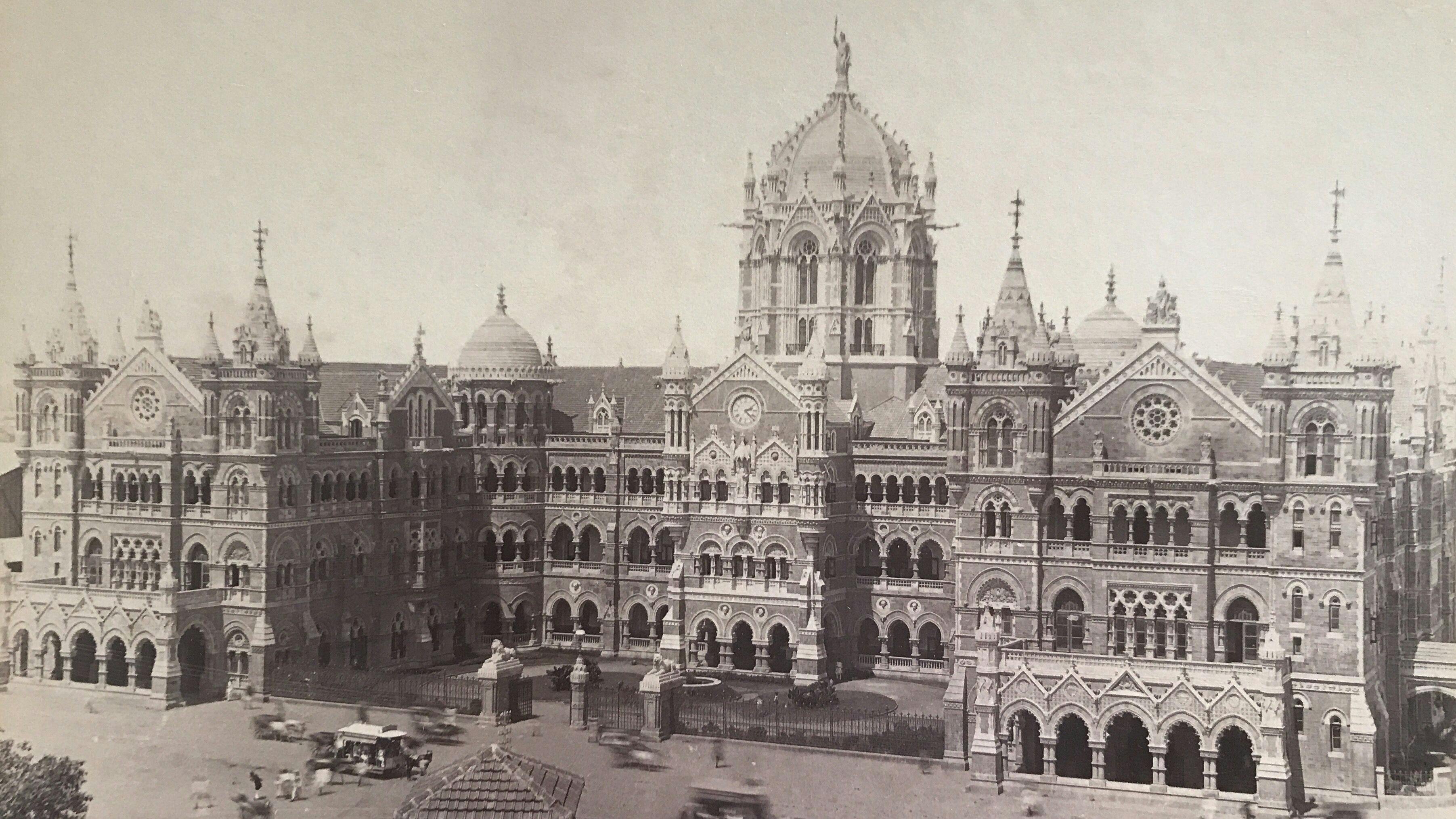Bygone Bombay
BOOKMARK
Our photo series takes you to Victorian Bombay, built with pride by British architects who strove to build a beautiful city and a grand urban centre.
The Statue of Queen Victoria was unveiled in 1872 and was a gift by the Gaekwad of Baroda. Sculpted by Matthew Noble, the canopy in pristine white was crafted from the best Sicilian marble, offset with columns below in a light Sienna marble. The statue of the Queen, eight feet and six inches, was executed in the finest Carrara marble and shows her seated in robes of state.
The statue was unveiled at the Victoria Gardens, Bombay but later shifted to the north end of Esplanade Road, today MG road, near the famous Tata Communications building. After Independence, this beautiful statue found its way back to its original home, today the Bhau Daji Lad Museum grounds, Byculla. The magnificent canopy is today in private premises.
In 1887, Queen Victoria, Empress of India, completed fifty years as a monarch. To commemorate this event, architect Frederick William Stevens undertook an ambitious project to build the Victoria Terminus, a railway station that would replace the earlier Bori Bunder station. The building today is a well known landmark in modern Mumbai and represents the revival of Victorian Gothic architecture. Atop the magnificent central dome stands a grand female statue holding a torch and a wheel symbolising Progress. The lion and the tiger that flank the entrance gates represent Great Britain and India.
This stunning vista of the old Bombay Back Bay is taken from the top of Malabar Hill, situated at the northern promontory of the bay. Seen far below is the ocean at low tide, to the right the fishing nets and today the start point of the famous Marine Drive starting at modern day Girgaum Chowpatty.
The British took immense pride in building the planned urban city of Bombay. Seen here, the Apollo Hotel, Colaba Causeway, was built in 1873 almost thirty years before the famous Taj of the Apollo Bunder. This building is today called the Metro House, and the ground floor of the building houses the famous Café Mondegar.
The Flora Fountain built in 1864, is an elaborate and beautiful architectural monument that stood at the crossroads of several important avenues with new buildings that were made by the British. The fountain seen here in the circle also marks the development of the area. To the left on the rear stands the Cathedral High School built in 1885. The building was later sold to the Oriental Life Assurance company and remodelled.
The Central Telegraph Office near the iconic Flora Fountain was once the hub of the commercial district. It employed hundreds of workers even as teleprinters worked around the clock, receiving and transmitting important information. This proximity was also the possible reason for most of the banks and other financial institutions to mushroom in this area! The days of the telegram are gone today but this majestic edifice built in revival Gothic style can still be seen next to the Hutatma Chowk, Mumbai.
This view of the public buildings from the Oval Maidan gives a sense of the majestic urban planning established by the makers of colonial Mumbai. The Bombay High Court buildings, the imposing Rajabai Clock tower and adjoining buildings were all built in a spate of building frenzy over the last quarter of the 19th century.
Borah Bazar, north of Fort was a commercial market and named after the community of Bohra Muslims, a mercantile class involved in shipping and trading. The Bazar was inhabited by local communities and a bustling market with vendors from around the world.
A lot of the commercial prosperity in South Bombay was brought by the transportation and trade industry. Picturesque harbour views with boats and sea views were very popular. This view of the Bombay Harbour shows the new warehouses and buildings that came up to support the commercial businesses.










